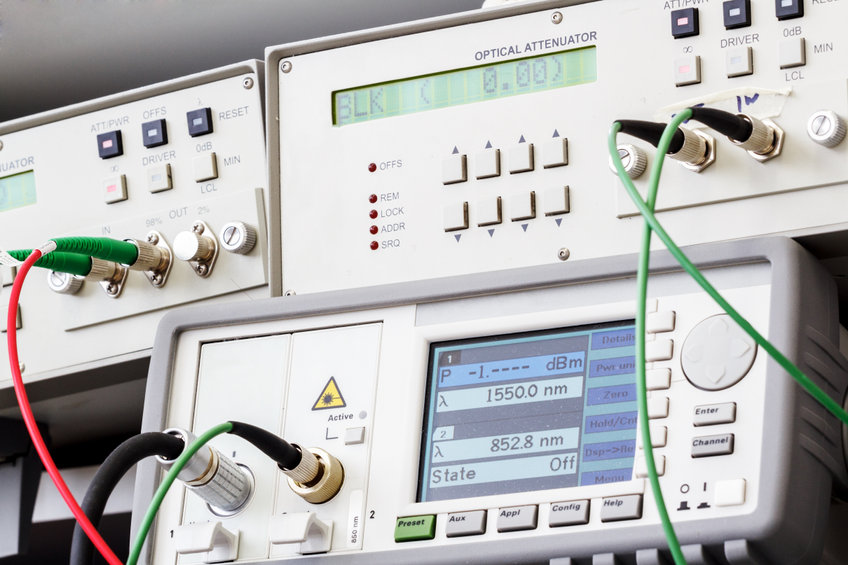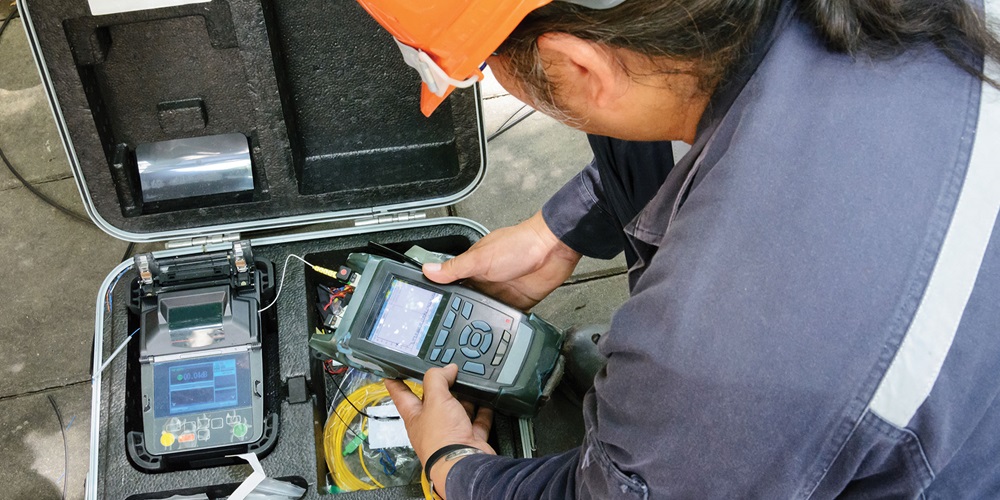Introducing the Key Uses of Optical Fiber Examining for Efficient Information Transmission
In the world of modern-day interaction, optical fibre screening arises as an important method for maximizing data transmission. Recognizing the diverse applications of optical fiber testing invites a deeper expedition right into its crucial role in shaping the future of data communication.

Relevance of Optical Fiber Testing
The importance of optical fiber screening can not be overemphasized, as it works as a crucial element in guaranteeing the dependability and effectiveness of data transmission systems. In an age where high-speed communication is vital, any type of deficiencies in fiber optics can bring about substantial data loss and lowered performance. Therefore, rigorous testing protocols are important to verify the integrity and efficiency of optical cable televisions.
Evaluating enables for the recognition of defects such as micro-bends, macrobends, and splice losses that could impede signal top quality. Additionally, it supplies understandings right into the general depletion and bandwidth abilities of the fiber, ensuring that the network satisfies specific operational standards. Regular screening not only enhances system performance however additionally lengthens the life-span of the infrastructure by identifying prospective issues before they escalate into expensive failures.

Kinds of Optical Fibre Tests
Numerous kinds of optical fiber tests are carried out to make certain the efficiency and integrity of fiber optic networks. These tests can be classified into several vital types, each serving a specific function in assessing the honesty of the fibre.
First, Optical Time Domain Name Reflectometry (OTDR) is a prominent examination that recognizes mistakes, interlaces, and ports within the fibre. By sending out pulses of light and examining the mirrored signals, technicians can pinpoint concerns along the fiber's length.
Second, insertion loss examinations review the quantity of signal loss when light passes via ports or splices, which is important for keeping network performance.
Third, return loss tests determine the quantity of light reflected back in the direction of the source, giving insights into the top quality of links and potential resources of interference.
Additionally, connection examinations guarantee that the fibre course is full, enabling service technicians to validate that the fibre is undamaged with no breaks. fibre testing equipment.
Finally, aesthetic fault locators make use of noticeable light to recognize breaks or severe bends in the fiber, aiding in fast troubleshooting. Jointly, these tests create a thorough strategy to maintaining ideal efficiency in fiber optic networks.

Applications in Network Maintenance
In modern telecommunications, effective network upkeep relies greatly on optical fibre screening to recognize and rectify problems immediately. Normal screening makes sure that the Discover More Here network runs at optimum efficiency levels, minimizing downtime and enhancing individual experience.
One of the key applications of optical fiber screening in upkeep is the detection of faults, such as breaks, flexes, or improper links. Methods like Optical Time Domain Reflectometry (OTDR) permit service technicians to find these problems precisely and assess the high quality of the fiber link. In addition, loss testing validates the integrity of the optical path, ensuring that signal depletion stays within acceptable limitations.
Regular maintenance testing likewise helps in preventative actions, recognizing possible issues prior to they intensify right into considerable failings. This aggressive technique can conserve organizations both time and funds. During upgrades or growths, optical fiber testing ensures that brand-new setups incorporate effortlessly with existing infrastructure.
Enhancing Data Transmission Reliability
Effective network upkeep through optical fibre testing not only addresses prompt issues yet also plays a substantial function in enhancing data transmission integrity. By recognizing faults, gauging signal loss, and analyzing the general condition of fiber optic cords, testing makes certain that potential problems are remedied prior to they escalate right into substantial disruptions.
Regular optical fibre screening, such as time-domain reflectometry (TDR) and optical time-domain reflectometry (OTDR), enables professionals to identify the exact places of breaks, bends, or adapter issues within the network. This proactive method not only minimizes downtime yet likewise maximizes the efficiency of data transmission by ensuring that the paths for signals are clear and working efficiently.
Furthermore, testing aids in validating adherence to sector criteria and specifications, which is important for preserving the integrity of information flow. By guaranteeing that each link satisfies required thresholds for loss and top quality, organizations can boost their self-confidence in the integrity of their information networks.
Ultimately, spending in extensive optical fibre testing not only boosts information transmission dependability yet additionally sustains the long-lasting functional efficiency of interaction facilities.
Future Trends in Fibre Screening
Emerging technologies are positioned to revolutionize fiber testing, leading the way for enhanced effectiveness and precision in information transmission diagnostics (optical fibre testing equipment). As the demand for faster web and higher data transfer remains to rise, the combination of advanced devices click to read such as expert system (AI) and machine understanding (ML) is established to transform typical fibre screening approaches. These technologies will make it possible for anticipating upkeep and automated mistake discovery, substantially decreasing downtime and improving network reliability
Additionally, the adoption of Web of Things (IoT) gadgets will certainly facilitate real-time tracking of fibre networks, enabling immediate identification of performance concerns. This shift in the direction of positive management will decrease disturbances and maximize data circulation.
Furthermore, innovations in optical time-domain reflectometry (OTDR) and brand-new testing criteria will certainly boost the precision of measurements, guaranteeing that data honesty is maintained throughout the transmission procedure. The advent go now of 5G innovation additionally requires the advancement of more innovative fibre testing methods to sustain its high-speed demands.
Final Thought
In final thought, optical fiber screening is important for keeping efficient data transmission within interaction networks. Routine testing not only makes sure compliance with market requirements but additionally promotes aggressive maintenance, eventually contributing to the long-term integrity and performance of fibre optic systems.